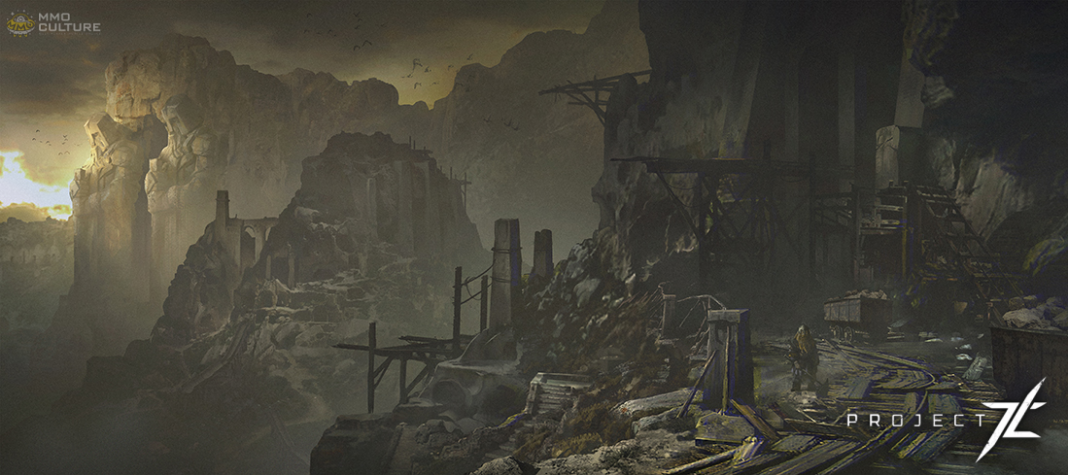


Darger was certainly and dramatically an outsider. The history of modernism is one riddled with relationships with the “other.” Picasso or Dubuffet might have seen Darger as an intercessor, privy to outside spirits and forces. His pictures appear to have sprung out of nowhere and yet can be followed in their obsessive rendering and design.

Was this work like therapy for Darger? Perhaps it allowed him to play out his fantasies and have control over something he thought to be magical. For him, art seems to have been necessary for survival, both in the physical sense and in the psychological realm. However much of a loner he was, Darger attended Mass nearly every day and was known to be outwardly friendly. Was Darger insane, disturbed? Certainly he felt rejected by family and society. Tolkien’s Middle Earth, but more Freudian and pedophilic. These paintings are evidence of Darger’s creation of a wholly alternate world replete with wars, humanoid cultures, geography,religion, and redemption. It is as if he felt compelled to illustrate these scenes, but only well enough to get them out of his head and down on to paper. But he made hundreds of them and they become obsessive after a while, almost mindless. There is no doubt that these works are well-crafted and often beautiful. The climate and land also move between believability and fantasy. The relationship between people makes sense in some places and appears illogical in others. In “Are chased a long distance by Glandelinian Soldiery with bloodhounds,” Darger creates a heavily peopled landscape that wavers between illusion and artifice. His compositions are dense with figures typically engaged in leisurely action or battle, set within wonderfully strange landscapes painted in watercolor. If the image was not scaled properly, he would take it to the photography counter at a near-by drugstore to have it enlarged or reduced. He was a poor draftsman and relied on tracing his figures and images from magazines, newspapers, and coloring books–he drew hands and feet awkwardly. Darger’s paintings, which were made on several layers of paper glued together, sit somewhere between intimate book illustration and heroic mural painting. In viewing Darger’s paintings, what becomes more interesting than the irony or drama of his life, is the insight into this man’s thinking and art-making process. In fact Darger’s entire body of paintings and writings were “discovered” upon his death by his landlord, Chicago photographer Nathan Lerner. This is of course ironic for someone who never sold or showed his work. Several of his works have been collected by the Museum of Modern Art in New York, and others were recently shown in The Ten Commandments exhibition at the Hygienne Museum in Dresden, Germany, a show featuring the significant forerunners of 21st century art. In recent years his prominence in the American art world has skyrocketed on both the critical and market scales, making him arguably the most famous self-taught, or so-called “outsider” artist. Living alone, working as a menial laborer in hospitals in order to get by, Darger appears to have spent the majority of his time and energy on 12 volumes of his 15,145-page typewritten book and its accompanying bound sets of paintings (several hundred separate pieces exist now).
Unreal world cultures locations series#
In 1909 he began the series of books that would illustrate and tell the story of the “Vivian Girls”–the one and only project on which he worked up until his death in 1973. At age thirteen, Darger was characterized as “feeble-minded” and placed in an institution, where he would stay until escaping three years later. Born in 1892, he lived in an alley house at Adams and Monroe Streets until 1900 when he was put in a Catholic boy’s home by his crippled father (his mother died when he was four). Also included are drawings of maps, figures, and flags that supplement and give detail to the world that Darger created in his epic story.ĭarger’s reclusive life has been well-documented. Some are as large as 110 inches in width and have completed works on both sides (they are hung so that the viewer is able to walk around them). Carl Hammer Gallery, who has managed the estate of Henry Darger for the past 13 years, presented some of the last works to be bought by collectors and museums in a densely hung show of drawn, painted, and collaged examples from the artist’s lifelong visual and literary project, “The Story of the Vivian Girls, in what is Known as the Realms of the Unreal, of the Glandeco-Angelinian War Storm, Caused by the Child Slave Rebellion.” The exhibition, titled Realms of the Unreal, is comprised mainly of large constructed paintings that would have been illustrations to the story in bound books.


 0 kommentar(er)
0 kommentar(er)
